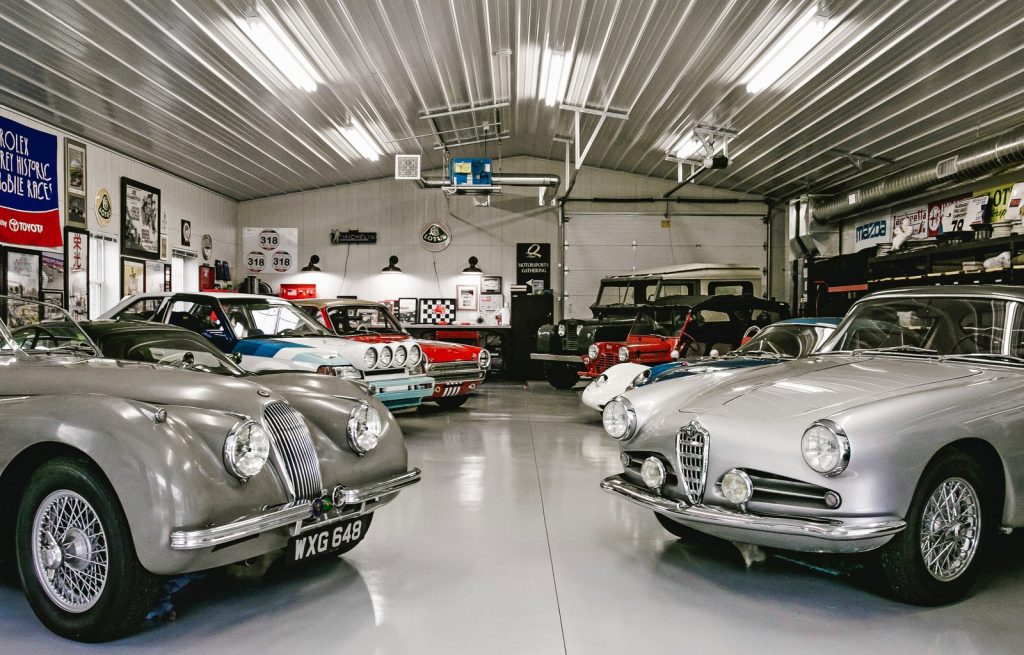Rust is the biggest villain in the lives of car owners. Also known as the silent killer of a vehicle, it causes serious damage to a car along with ruining its appearance. If left untreated for long, rust can also cause severe safety issues. Safeguarding your car against rust is highly essential so that your car’s value or lifespan does not diminish. While a garage structure is an excellent way to begin, there are several other preventative measures to be taken to maintain the health of your vehicle!
Keeping rust at bay is neither impossible nor time-consuming. However, it does require constant effort and dedication. With appropriate care and adequate knowledge, rust can be effectively managed.
Understanding Rust — What It Is and Why It Occurs
Rust is also called red dust because of its appearance and texture. It occurs because of the breakdown of iron-based material and this process is called oxidation. It usually happens when iron and oxygen come in contact with moisture or water. Salt often acts as an accelerator of the rusting process.
Usually, rust occurs on cars in stages. If it isn’t taken care of initially, it is likely to continue progressing and causing more damage.
- Surface Rust: This is the initial sign of rusting and it is usually seen as reddish-brown spots when your car’s paint breaks down over time. It occurs due to prolonged exposure to UV rays or due to exterior damages like scratches and dents. If detected early, you can easily treat it.
- Bubble Rust: If surface rust is left untreated, it deepens to create scales. This stage is known as bubble or scale rust. Exposing the metal, rust spreads and flakes eventually. It looks like bubbling paint and is a little more complicated to treat.
- Penetrating Rust: When you leave bubble rust without treating it properly, it starts to flake the base metal, creating holes in your vehicle. This makes the metal rust right through, affecting your car’s surface. You should intervene quickly. However, at this stage, you are left with limited solutions, like changing the entire car’s panel or cutting out the corroded areas.
- Destructive Effects Of Rust: Why Protection Matters?
Rust can wreak havoc on your car, and there are several common areas that are prone to catching rust, even within a metal garage. These include:
- Undercarriage
- Wheel wells
- Door edges
- Trunk lid
Not all parts of your car dry quickly, and hence, several areas end up compromising the strength of your vehicle. High humidity, salt exposure, and harsh weather conditions can fasten the process of rust formation. Extended exposure to the sun can also cause rust to form. A few reasons why protecting your vehicle from rust is essential are:
- To maintain the structural integrity of your vehicle because rust can affect the safety of passengers.
- To extend the lifespan and safety of your car as rust can destroy metal parts and can also cause significant damages, making cars unsafe to drive.
- To keep up the appearance of your vehicle and maintain its shiny and pristine appeal.
- To retain the resale value of your vehicle as rust can severely deter potential buyers from investing in your car.
- To avoid costly repairs and comply with regulations as rust tends to spread across the vehicle quickly.
Proactive Measures: How to Prevent Rust on Your Vehicle
Preventing rust from occurring is more efficient, cost-effective, and less draining than dealing with the consequences of corrosion.
Right storage matters
Parking your car in your driveway is outrightly calling for rust to occur. You should begin by finding the right prefabricated garage or carport for your vehicle to house them properly.
Installing a metal garage in your backyard is one of the best ways to safeguard your vehicle from rust and corrosion. A garage structure will protect your car from weather elements like snowfall, rainfall, hail, high winds, and sun exposure.
A metal garage is highly resistant to pests, termites, rust, corrosion, and wasps, making it perfect for protecting your vehicles from these elements. You can also customize these structures to fit all your needs.
You can also control the temperature and reduce moisture within the prefabricated garage structure by proper insulation and ventilation, keeping humidity and rust at bay.
Regularly wash your car
Washing your car regularly will not just keep your car looking shiny and new but also will remove any grime, dirt, or salt accumulated over the car. Instead of waiting for your vehicle to look dirty, you should wash it at least twice a week. Pay more attention to sensitive areas. A few tips to keep in mind while washing are:
- Use a mild soap
- A high-pressure cleaner is highly effective
- Ensure all parts of your car dry properly
- To wipe, use a sponge or a micro-fiber towel
Routinely wax the car
To maintain the condition of your car, you should wax it at least twice a year. This forms a preventative layer and acts as a barrier between your car’s surface and moisture. If you store your vehicle in a prefabricated garage, you would need to wax it less frequently.
Use rust-proof treatments
You can employ several rust-proof treatments involving coatings, sprays, and other elements to prevent rust from occurring.
- Apply a thick and protective layer on the undercarriage of your vehicle to prevent rust, especially in humid areas.
- Use an electronic rust inhibitor, which is an electrical device that uses current to stop rust formation on metal parts of your car.
- Use rust-preventative sprays inside the doors and around the wheels.
- Spray rust inhibitors to add a layer of protection over vulnerable areas of your vehicles.
Halting the Spread: Effective Ways to Stop Rust
If rust has already occurred on the surface of your car, then you can utilize the following measures to stop it from spreading further:
- Rust Converters: These are chemicals that can efficiently convert the rust into a stable compound along with adding a protective layer.
- Rust Dissolvers: These contain acid to break down the layer of rust and make it easier to remove it. They can work really well in heavily rusted areas.
- Sand Paper: In case of surface rusting, you can sand down the area to remove the rust and then apply a primer as well as a fresh paint coating for a clean finish.
Essential Rust Prevention Tips for Long-Term Safety
- Regularly inspect your car and look for any signs of rust spots, especially in vulnerable areas.
- Check for and fix water leaks, such as damp carpets and musty smells, that can be caused by a damaged sunroof or windshield.
- Routinely touch up scratches to avoid rust forming over them.
- Carry out an annual rust-proofing process using professional help.
- Don’t wash your car too frequently, as it might trap moisture within the vehicle.
- Opt for stainless or galvanized steel parts in order to prevent rust formation.
- Check the undercarriage of the car regularly, as it often comes in contact with road salt.
Prevention Begins At Home
Protecting your expensive vehicles from costly repairs as well as from being drained due to rust is highly essential. Your steel garage will surely safeguard the car, but for enhanced protection, you should care for your vehicles regularly. Shielding your cars is a year-round job, and you should do it with utmost sincerity.



